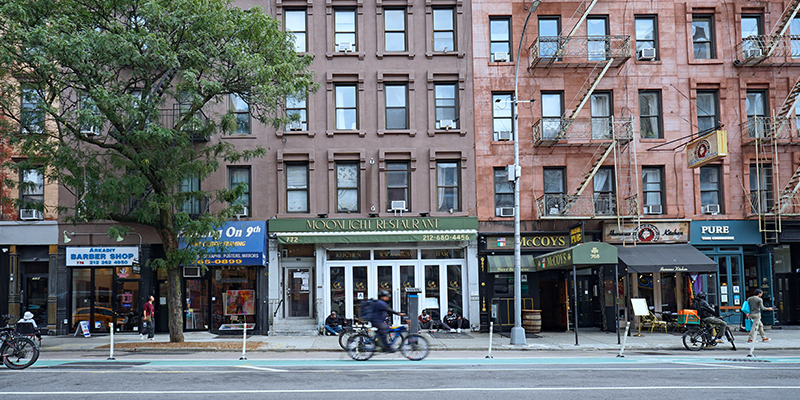In January, NAIOP conducted its seventh survey of its U.S. members on the impacts of COVID-19. Since April, the association has examined the pandemic’s effects on commercial real estate and how firms have responded. The four months since the last survey witnessed significant events, including federal elections and the FDA approval of two highly effective coronavirus vaccines. Respondents to the survey report improved rent collection rates, an increase in industrial investment activity, and an improved outlook for employment in their firms. Fewer respondents now expect the pandemic will significantly affect their business operations for more than a year. However, respondents also report continued disruptions to ongoing development projects.
The survey was completed by 228 NAIOP members between January 19 and 22. Respondents represent a range of professions, including developers, building owners, building managers, brokers, lenders and investors.
Below is an overview of the survey results with direct quotes from participants (in italics) followed by raw data from the survey and a profile of respondent characteristics. Results from September’s survey can be found here. Note that charts in this analysis illustrate data from the three most recent surveys. Data from the April-July surveys are published in earlier posts.
Acquisition and Development Activity: A Tale of Four Sectors
Several past surveys had shown steadily increasing acquisition and development activity for industrial, office and multifamily properties. In this survey, respondents report continued growth in industrial acquisition and development activity, but office and multifamily deal activity has slipped since September. In both sectors, a slightly larger share of respondents report witnessing no deal activity, and building acquisitions and new development were also slightly less common in each sector. However, it should be noted that reported deal activity in both sectors remains more robust than it had been before September. The office sector continues to attract substantially less new development than the industrial or multifamily sectors. Retail properties remain of limited interest to developers, but some existing buildings have begun to attract buyers, with a quarter of respondents reporting having witnessed retail building acquisitions in January. Strong growth in industrial deal activity and modest growth in retail acquisitions suggest an overall increase in commercial real estate investment activity.
What types of commercial real estate acquisitions or new development have you witnessed occurring in the last three weeks in the markets in which you are active?




“I specialize in industrial investments. I have experienced a good deal of activity over the recent 12 months and expect it to continue.”
“I work for a company that owns land in Massachusetts. We have seen an avalanche of interest for life science and industrial projects and virtually no interest for commercial office or retail projects.”
Rent Collections and Relief
Rent collection rates improved across most sectors, aside from a slight decline in collection rates for multifamily properties. Eighty-seven percent of respondents report that 90% or more of their office tenants have paid in full and on time, marking the highest reported collection rates for office properties since the survey was first conducted last April. Industrial rent collections remain largely unchanged but robust. Multifamily collections dipped somewhat, with only 79.6% of respondents reporting 90%+ on-time collection rates. Retail rent collections have improved substantially, but remain much worse than for other property types, with only 38.5% of respondents reporting 90%+ on-time collection rates for their properties.
Improved office and retail collection rates suggest improved business conditions for office and retail tenants. Many tenants have likely benefited directly or indirectly from the recent renewal of federal relief programs, such as Paycheck Protection Program loans to small businesses and direct payments to taxpayers.

*The survey asked what percentage of tenants had not paid their rent in full and on time by the 15th of each month. These charts display the difference between this percentage and 100%.
Echoing improved rent collection rates, respondents also report that fewer tenants had requested rent relief in January, with reductions in these requests reported across all property types. Office properties experienced the sharpest decline in relief requests, with only 19.7% of respondents reporting that more than 10% of office tenants had requested relief. On the other hand, while lower than in September, rent relief requests remain much more common among retail properties, with three-quarters of respondents reporting that 10% or more of their retail tenants had requested relief.
Improving tenant financial conditions is also likely behind a general decline in the frequency with which building owners are offering tenants rental assistance. A large majority of respondents continue to offer some form of assistance. Delaying and amortizing rent payments (offered by 65.7% of respondents) and adjusting rents in exchange for a longer term (offered by 52.9% of respondents) continue to be the most common forms of rental assistance. However, the percentage of respondents offering these and other forms of relief declined, while the percentage that report that they were not making adjustments to in-place contracts increased from 20.8% in September to 25.5% in January.

The Pandemic Continues to Affect Development Projects and Building Operations
Developers report that the pandemic continues to affect ongoing projects in several ways. More than two thirds report added delays in obtaining permits and entitlements due to the coronavirus, just under half (49.4%) report a significant decline in leasing activity, and a large minority of respondents (40.2%) report delays or shortages in construction supplies. On the other hand, government mandated halts to construction projects are now very rare, reported by only 5.8% of respondents.
How has the coronavirus outbreak affected your current development projects?

Building owners and managers continue to employ coronavirus safety measures at rates similar to past surveys. Most respondents report that they have increased the frequency of cleaning (82.8% of respondents), are communicating additional hygiene and safety guidelines (73.7%), are distributing hand sanitizer and disinfectants (61.6%), and have closed common amenity areas (55.6%). However, fewer respondents report banning visitors than in September (15.2%, down from 25.7%). As in past surveys, respondent comments suggest that building owners are investing in a range of improvements to reduce the risk of coronavirus transmission, including touchless fixtures and HVAC upgrades such as improved filtration, ultraviolet lighting, and ionization equipment.
“We have not seen a significant drop-off in transactions, but have experienced delays across the board: lending, field work, entitlements, etc. What used to take 5-6 months seems to take 8-9 months today.”
“I manage the construction side of our business and we’ve had numerous projects put on the shelf due the outbreak. The most significant being the immediate halt to the 12 hotels we had in the pipeline for construction. Beyond that, several new office buildings were placed on hold or had a complete change of use for the sites where they had been planned.”
“Large corporate tenants are cautious and slow to access their office space. Some are subleasing 25-50% of committed lease liability planning on permanent home offices. There are very few large tenants looking for space. Small (5,000-10,000 sf) tenants are leasing well. No issues or slowdown in this section of the business.”
Outlook
The development of multiple highly effective coronavirus vaccines appears to have contributed to greater optimism about the pandemic’s duration. Almost 40% of respondents indicated they expect the pandemic will significantly affect their business operations for more than a year, down from 46.8% in September. As in past surveys, comments reflect a range of views on expectations for the duration of the pandemic’s impact on commercial real estate, with respondents predicting different outcomes for office, industrial and retail properties.
How long do you expect the events associated with the coronavirus outbreak to significantly impact your business operations?

“It remains uncertain as to when companies will return to work, what the new environment will look like and how much space they will need.”
“We see a major adjustment coming in overall office usage and the lease structure. Most likely, tenants will be seeking smaller offices in more diverse non-urban locations. For the immediate future, we see a substantial excess of traditional multistory office spaces, with tenants moving to shorter lease terms and requesting lower base rents.”
“Low interest rates and some confidence in the [ability of the] vaccine to bring the virus under control appears to be stimulating continued CRE activity, but unless or until the effectiveness of the vaccine is proven on an international scale and/or effective COVID treatments are made available to the general populous, the impact of the pandemic will continue and perhaps worsen before it improves.”
“I believe sanitizing habits will outlast the pandemic and expect consumers’ new hygiene habits are here to stay along with online shopping… E-commerce is in the driver’s seat and is here to stay in my opinion.”
“I think one year from now there will be pent up demand for all sectors except for retail and hospitality.”
Employment
Increased optimism about the duration of the pandemic and improving industry fundamentals are also reflected in employment expectations within commercial real estate firms and related businesses. Very few respondents now expect that their firms will reduce staff, hours or compensation over the next three months, and nearly one third of respondents now expect their firms will add new hires, up from 23.2% in September.

Survey Results
How long do you expect the events associated with the coronavirus outbreak to significantly impact your business operations?

How is the coronavirus outbreak currently affecting your development projects (select all that apply)?

What steps are you taking to improve the safety of your properties (select all that apply)?

What percentage of tenants in your properties have not paid their rent in full and on time as of September 15?

What percentage of tenants in your properties have approached you regarding rent reduction or relief as of September 15?

What steps is your firm taking when working with tenants to adapt to the outbreak (select all that apply)?

What types of commercial real estate acquisitions or new development have you witnessed occurring in the last three weeks in the markets in which you are active (select all that apply)?

What adjustments to staffing does your firm anticipate making over the next three months (select all that apply)?

Respondent Profile
Which of the following best describes your primary profession?

Which of the following property types do you currently own or operate? For mixed-use properties, please select all uses that apply.









